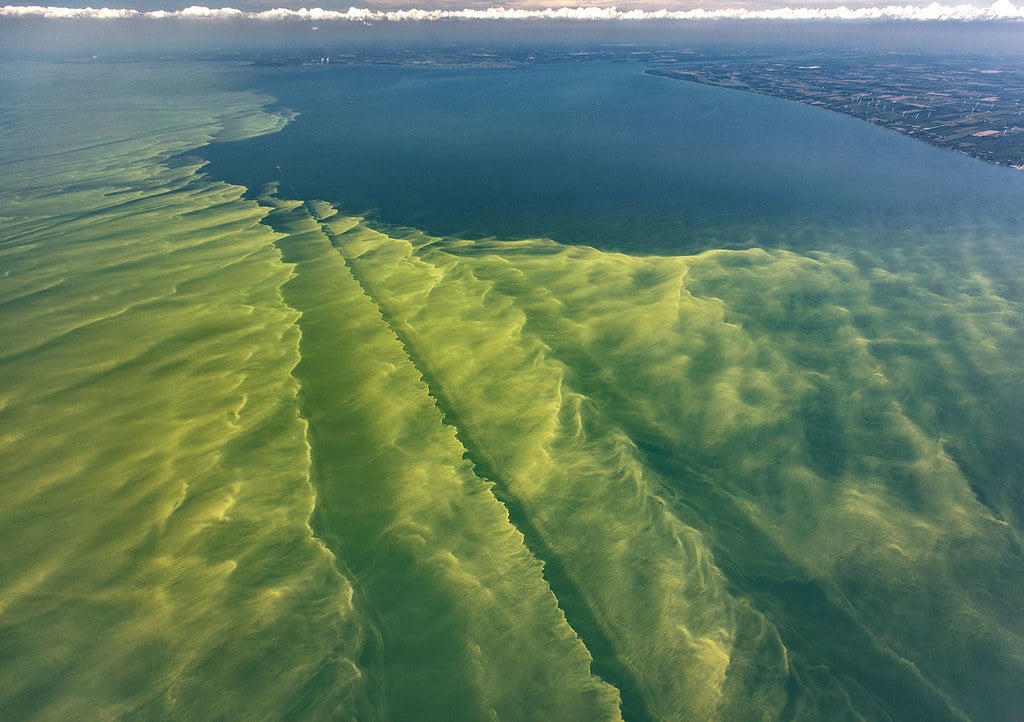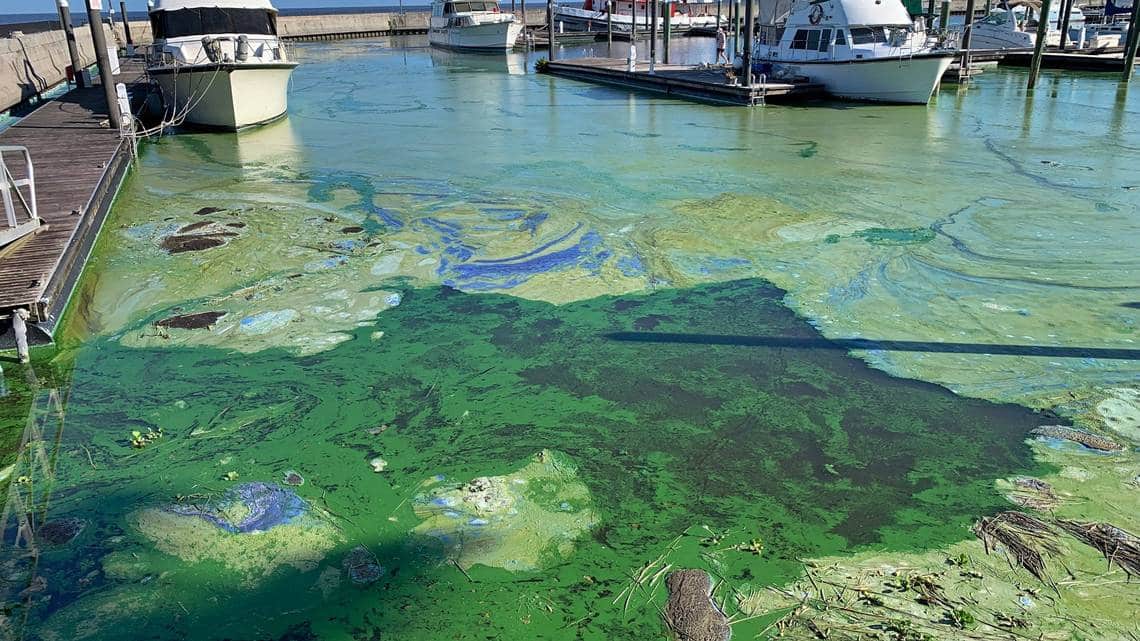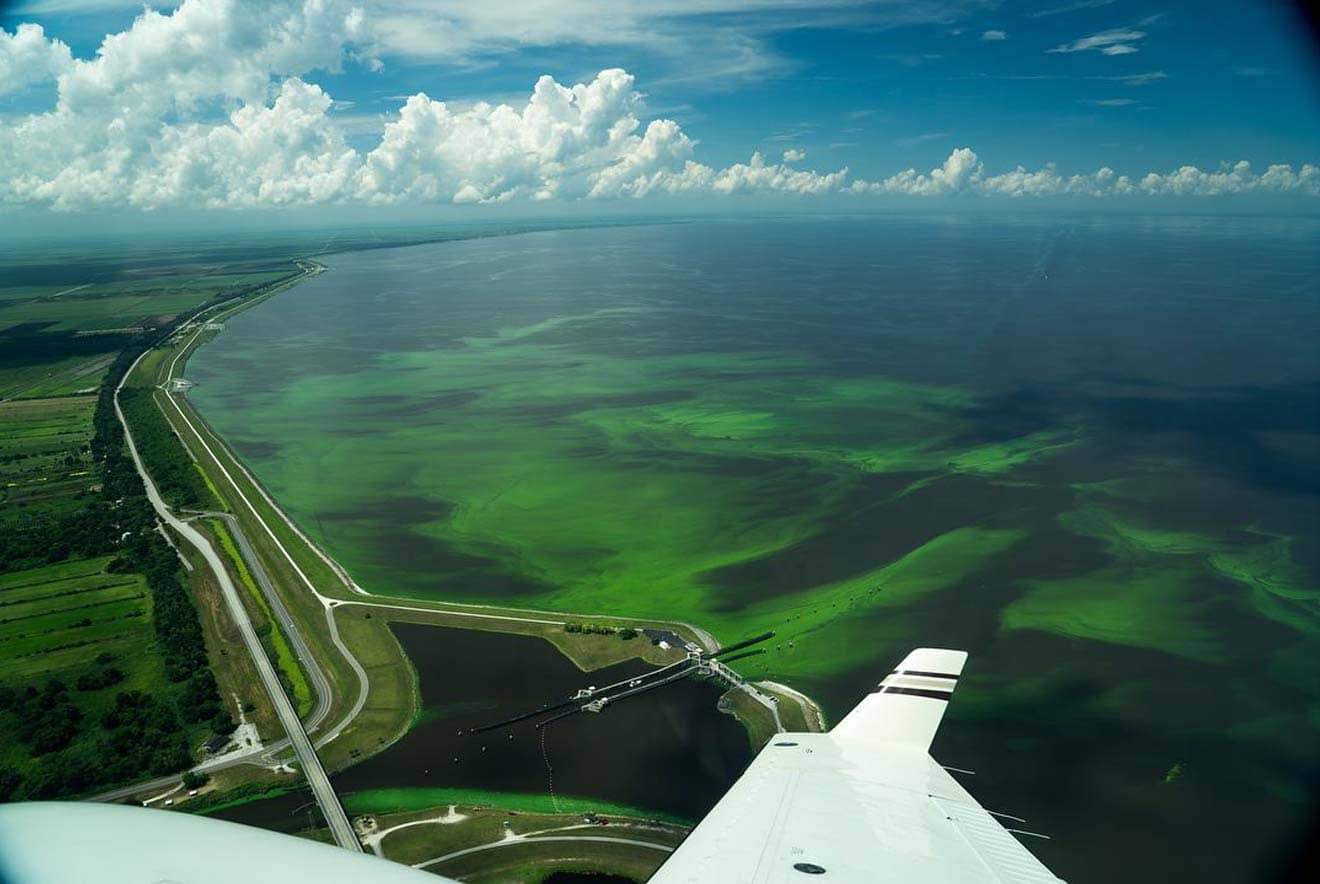The beaches are covered with thousands of dead fish. More than 260 tons of marine life have been washed ashore, lying lifeless along 150 miles of coastline. This is the terrible consequence of toxic algae blooms in Tampa Bay, Florida, a coastal area severely affected by this type of event. The enormous accumulation of algae biomass and dead marine life highlights the magnitude and severity of harmful algal blooms. Harmful algal blooms, also known as HABs, frequently affect coastal areas throughout the United States, damaging fisheries, marine life, the environment, and local economies.
In recent years, freshwater lakes, ponds, and many other waterways in the United States have faced an increasing number of harmful algal blooms (HABs). And it appears that these devastating phenomena are here to stay. Along the southern California coast, harmful algal blooms have occurred for four consecutive years, demonstrating the ongoing and repeated impact on marine ecosystems, wildlife, and environmental safety.
Below are some of the most notable cases of HABs in the country.
Introduction to Algal Blooms
Algae produce most of the oxygen we breathe and provide food for fish and other animals. Algal blooms, often referred to as harmful algal blooms (HABs), are a growing environmental threat throughout the United States. These blooms occur when certain marine species of phytoplankton, microscopic organisms such as Alexandrium and Pseudo-nitzschia, multiply rapidly in seawater. They sometimes stain the water and release dangerous toxins.
When these harmful algal blooms reach high concentrations, they devastate marine wildlife and affect the organic matter in the ecosystem. This includes fish, shellfish, forage fish, and even marine mammals. The largest harmful algal bloom ever observed on the West Coast caused numerous fish deaths and significant economic losses to local economies dependent on fishing and tourism.
Scientists discovered that these toxic algal blooms not only threaten marine life, but also pose a serious risk to public health and humans, as toxins can accumulate in the shellfish and fish we consume. As algal bloom events continue to occur with greater frequency and severity, understanding their impact on marine species, coastal communities, and the overall ecosystem has become a priority for researchers and public health officials.
Lake stratification occurs seasonally, often in response to changes in temperature and sunlight, and can create conditions that favor the development of harmful algal blooms.
Causes
The causes of harmful algal blooms are complex and involve a combination of natural and human factors. Climate change is playing a significant role, as rising ocean temperatures and changing weather patterns create ideal conditions for algal blooms to thrive. In regions such as Southern California, nutrient-rich waters from deep ocean currents, sometimes intensified by climate change, can fuel explosive growth of harmful algae. Runoff from agriculture and urban areas adds even more nutrients, further increasing the risk of blooms and water contamination.
Effects
The effects are far-reaching: in Lake Erie, harmful algal blooms have been linked to the formation of hypoxic “dead zones,” where low oxygen levels make it impossible for many marine species to survive, reducing the abundance of fish and other wildlife. Along the California coast, researchers have observed high levels of domoic acid, a potent toxin produced by certain marine phytoplankton species, which accumulates in shellfish and fish.
This can cause paralytic shellfish poisoning in humans and cause illness or death in marine mammals and other animals. Fish kills, economic losses to the fishing and tourism industries, and threats to public health and humans are just some of the consequences. In 2014, the commercial Dungeness crab fishery lost $97 million in landings due to harmful algal blooms.
Scientists are working to unravel the connection between climate change, nutrient runoff, and the occurrence of harmful algal blooms, with the goal of developing strategies to protect marine wildlife, human health, and the security of local economies in the future.
Great Lakes, Great Algal Blooms
The Great Lakes, located in North America on the border between the United States and Canada, make up approximately 21% of the world’s freshwater supply. Lakes Superior, Michigan, Huron, Erie, and Ontario contain more than 90% of the surface freshwater supply in the United States, and more than 40 million people depend on drinking water from the Great Lakes region.
Scientific studies and continuous monitoring play a crucial role in verifying, monitoring, and treating harmful algal blooms in the Great Lakes, as they help detect toxins, analyze characteristics, and understand the ecological processes and sources that influence these algal blooms.
Lake Erie
The history of harmful blooms in Lake Erie is complex and has many causes. The stratification of the lake can exacerbate the negative effects of harmful algal blooms by creating hypoxic dead zones. During the 1960s and 1970s, human activities such as agriculture, excessive fertilizer use, and industry caused eutrophication and fueled the growth and spread of algal blooms in the lake. The blooms appeared to decline until the late 1990s, when they began to reappear. Since then, HABs have resurfaced every year, becoming increasingly severe and long-lasting.
One of the most notable episodes occurred in 2011. An unprecedented bloom covered about 5,200 km² of the lake, releasing a powerful toxin called microcystin, which can cause serious health problems in humans, such as abdominal pain, vomiting, nausea, and pneumonia. The toxicity level in Lake Erie exceeded World Health Organization guidelinesby 224 times.
In the summer of 2014, the drinking water supply to 400,000 people in Toledo, Ohio, was shut off for three days. This was due to toxicity caused by algae. The population was advised not to drink or touch the water and to seek medical attention if they had been exposed to contaminated water. Algal blooms also cause aquatic organisms such as fish and shellfish to accumulate toxins, which can then be transferred through the food chain and affect humans who consume them.
Today, nutrient runoff continues to cause serious algae problems in Lake Erie.

Lake Superior
Lake Superior is the deepest and most northern of the Great Lakes. It was once thought to be immune to algal blooms. The reason? A lack of nutrient runoff from the surroundings and cold temperatures all year round. Superior, however, is one of the fastest-warming lakes in the world. In 2012, the lake experienced its first documented cyanobacteria bloom. This marked the beginning of recurring harmful blooms in Lake Superior and shocking the US and Canada. Since then, harmful blooms have recurred, but the worst came to surface in 2018, when a large bloom stretched approximately 50 miles from east of Superior to the Apostle Islands on the lake’s southern shore. Following the event, a review concluded that the severe blooms followed heavy flooding and occurred during summer.
Although smaller, algae blooms continued to appear in 2021 as well. This encouraged state officials and researchers to increase their monitoring capacities. Lakes Michigan, Huron, and Ontario also suffer from harmful blooms on a regular basis. In the years when algae blooms occurred on Superior, climate change, with warmer temperatures and heavy rainfalls, encouraged algae to grow in excess. Poor environmental monitoring is also a major culprit.
Florida’s Devastating Red Tides
Red tide is a phenomenon in which HABs occur in coastal waters. The first recorded accounts of red tide (Karenia Brevis) in Florida’s Gulf Coast date back to the 16th century. This is when the Spanish explorers heard tales of toxic red waters killing fish and birds. These toxic events are caused by algal toxins produced by certain species of algae.
Algae blooms on Florida’s Gulf Coast
The first scientifically recorded red tide in the Gulf Coast was in 1844. Algae blooms continued to occur throughout the years. Between 2005 and 2006, a mass die-off caused by another red tide bloom killed 190 dolphins
The 2018 bloom
The largest and deadliest algal bloom event occurred in 2018. Hundreds of sea turtles, a dozen dolphins, and a hundred manatees were all killed and washed up on the shores. Wildlife was also severely affected. Scientists believe that this bloom started in 2017 and lasted for 15 months, after Hurricane Irma hit Florida. The water brought nutrients from the land into the water, feeding the algae.
High concentrations of algae and toxins were observed in July, marking a peak in the bloom’s severity. In June, significant marine wildlife mortality events were also reported, highlighting the critical timing of the bloom’s impact.
This bloom amounted to $8 million in business losses. Scientists continue to monitor algae blooms in Florida, hoping that one day they’ll be able to predict algae-related events.
Lake Okeechobee
Algae blooms are a regular phenomenon in Lake O during summer months. The blooms are fueled by nutrient pollution coming from domestic, industrial, and agricultural wastes, and are aggravated by climate change. In May 2016, a massive bloom covered 33 square miles (85 square km) of the lake. This bloom persisted for a long time, degrading the water quality all the way to the Atlantic Ocean.
These recurring events are considered toxic blooms, posing significant risks to water quality and wildlife in the region.
Ever since, the blooms on Okeechobee have become even more severe. In 2021, about 500 square miles of the lake were covered with blue-green algae. Okeechobee toxin levels measured 16 times higher than what the Department of Environmental Protection recommends. Tests showed levels of microcystin at 860 micrograms per liter, more than 100 times higher than the Environmental Protection Agency’s health guideline for microcystin.
After the 2021 bloom, notable but smaller-scale cyanobacteria blooms reappeared in 2022 and 2023, prompting renewed water-quality alerts across adjacent communities, yet thankfully not reaching the extreme coverage seen previously.

How are we dealing with algae problems?
Despite the economical, health, and environmental damages that these blooms have caused, minimal efforts have been made to avert such issues.
It’s no question that water quality monitoring is essential for understanding algae trends and predicting harmful blooms. Intensified government and scientific interventions are urgently needed to address the problem.
Government websites publish updates regarding algal blooms across the states, as well as relevant resources and programs. Recently, NASA released a new dataset of 2300 lakes in the US contaminated with cyanobacteria. The new dataset is now available to the general public. This is in the form of raw data, algae bloom maps, and an index of cyanobacteria risk to human health. In time, this standardized way of assessing blue-green algae will enable scientists to compare blooms across the US. In turn helping gain insights on algae trends, and predict them with greater accuracy.
Other waterways around the country are being rescued with the help of sustainable technologies. For example, the Florida Gulf Coast University (FGCU) monitors water quality in real-time and controls algae blooms with ultrasonic, solar-powered buoys. Same goes for the New York State Department of Environmental Conservation (NYDEC) and Florida Department of Environmental Protection.
